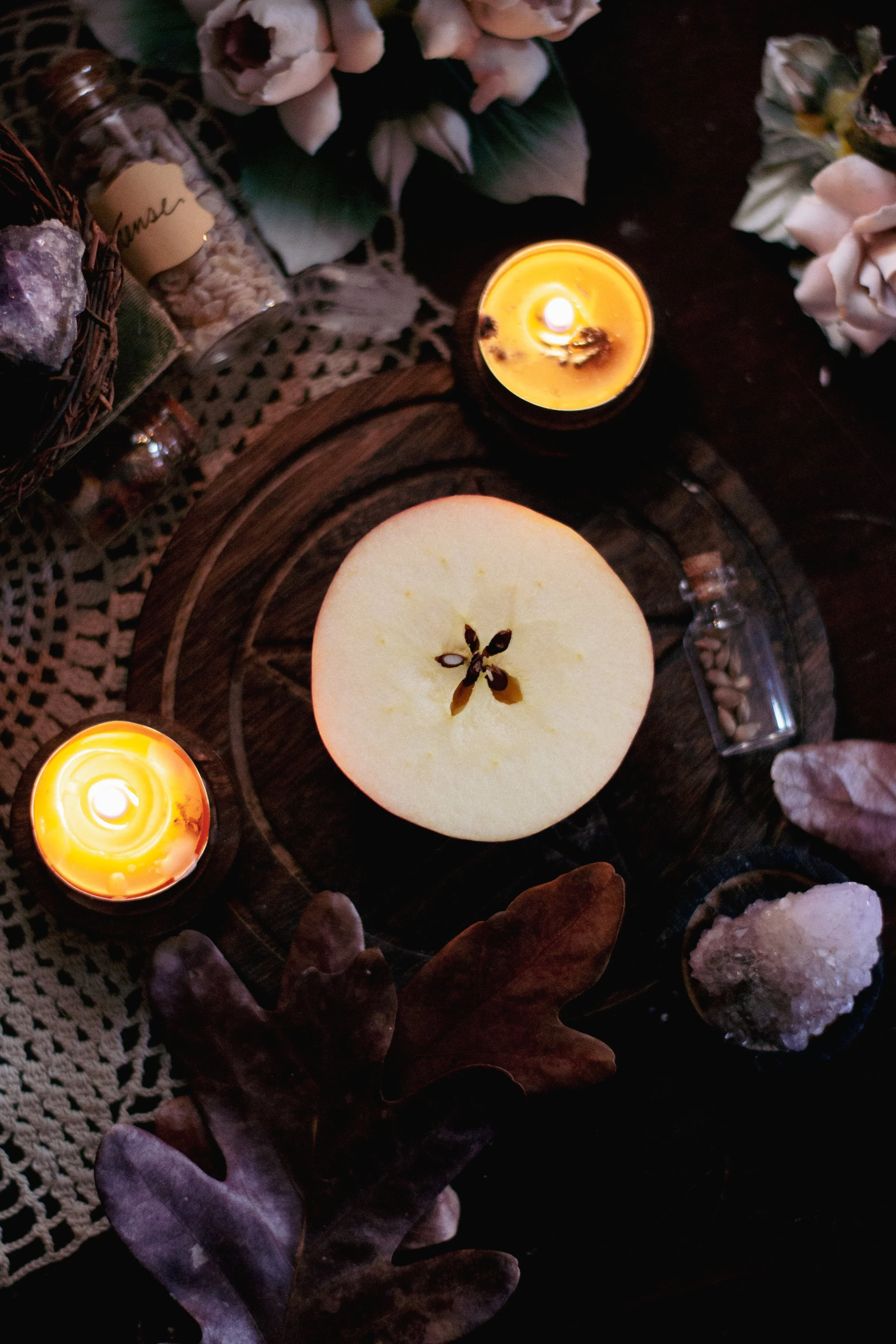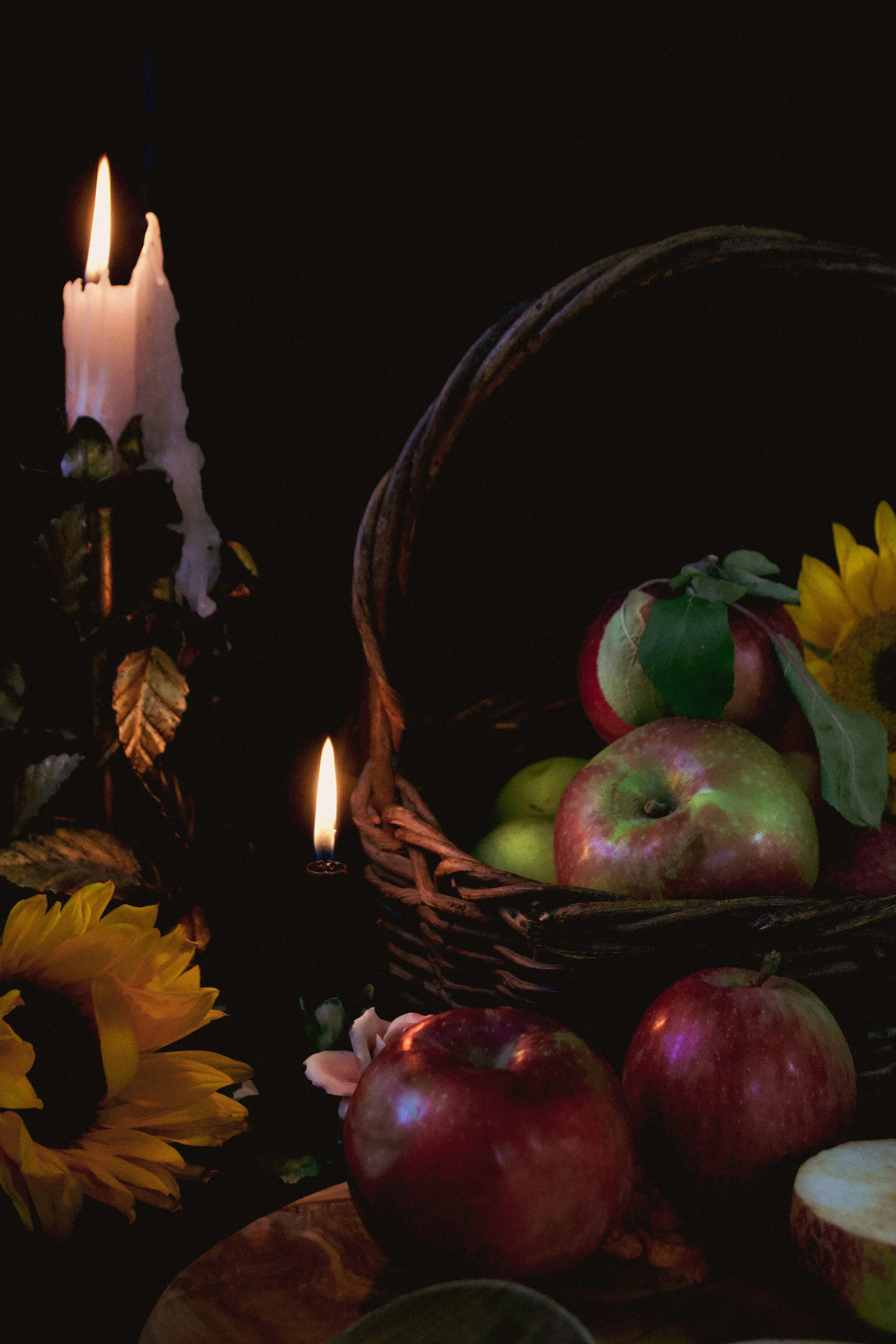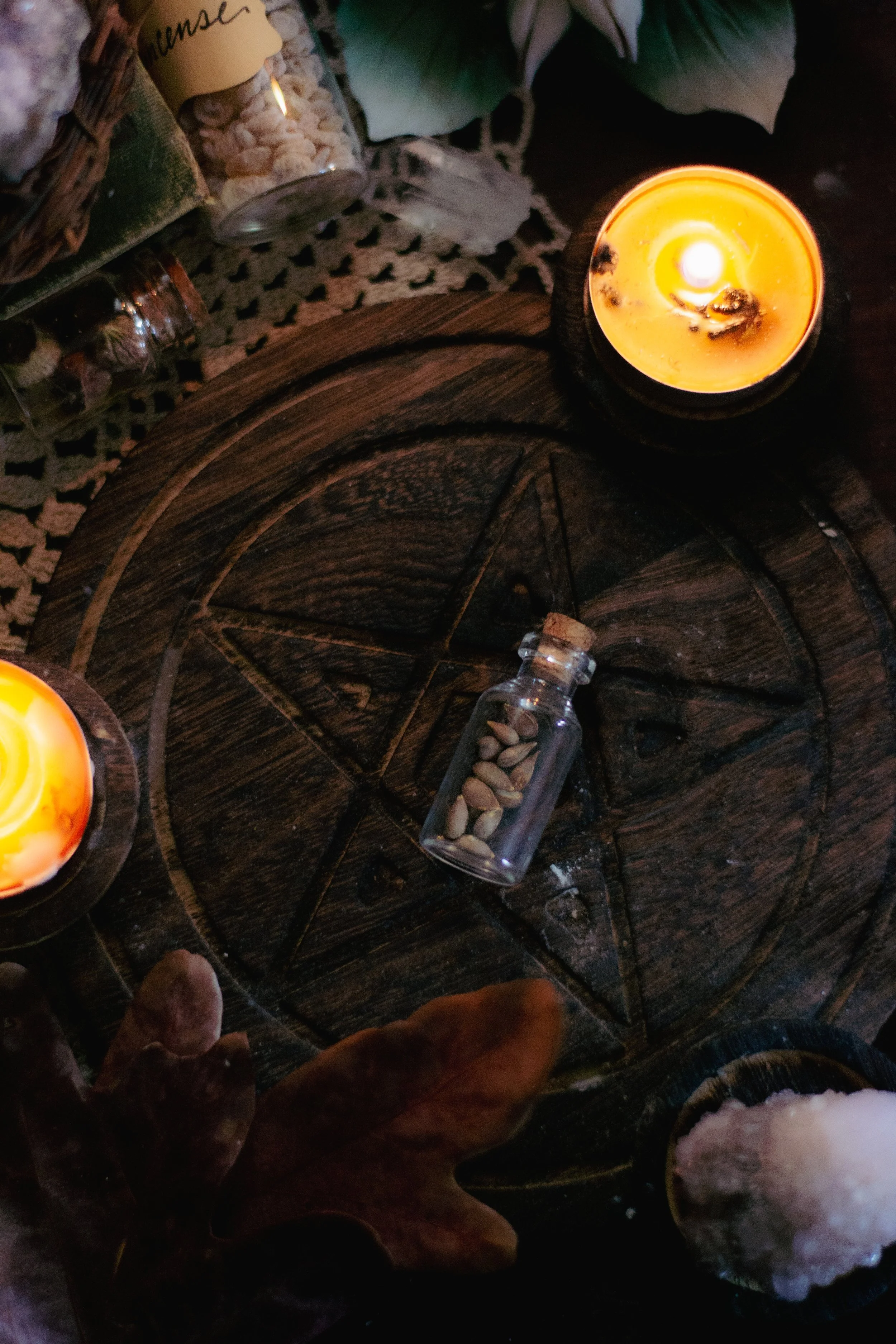Samhain: The Feast of Apples
“And when you crush an apple with your teeth, say to it in your heart: Your seeds shall live in my body, And the buds of your tomorrow shall blossom in my heart, And your fragrance shall be my breath, And together we shall rejoice through all the seasons.”
When thinking about enchanted orchards as they appear in fairy tales and folk stories, there are none as famous as the mystical, magical apple. Governed by Venus and said to be the fruit of the gods (and the dead), apples ripen en masse as the dark months return and we invite fire back into our homes.
Apples are the food of the Underworld, and at one time, Samhain was called the Feast of Apples.
'Malum' is Latin for 'evil,' but it also means apple. There's a good chance this overlap played into the belief that apples were poisonous or might curse the picker.
In folklore, apple trees are protective plants. They provide shelter to those with pure intentions, as we see in Andrew Lang's “The Tale of Little Two-Eyes.” In this fairy tale, a tree with silver leaves and golden apples sprouts overnight, just in time to rescue our heroine from her evil stepmother and stepsisters.
If we take a trip to the Isle of Avalon (the Island of Apples), we'll find the mythical Merlin, famed magician and mentor to King Arthur. In stories, Merlin often performed magickal rites in apple orchards. He also consumed the fruit, which strengthened his gift of prophecy, and he carried an apple bough to aid him when he moved between worlds.
The Welsh bard Taliesin carried an enchanted branch from an apple tree. Taliesen was the son of Cerridwen, an ancient goddess and the Crone of Wales. Talisen’s name translates to “Radiant Brow,” and like Merlin, the bard delivered prophecy in his poetry.
The horned and beastly are also drawn to the apple. Legend says that unicorns often find sanctuary beneath apple trees and nibble on low-hanging fruit. In the Garden of Eden, the apples are vessels of knowledge. They are protected and parsed out by the silver-tongued serpent.
In Greek mythology, Hera is the Mother of Gods and a goddess of knowledge. She was the keeper of the Garden of Hersperides, a highly protected place that grew golden apples. When consumed, Hera’s apples promised eternal life.
Romans called their goddess of apples Pomona. Being a spirit of trees and fruition, Pomona was favored by gardeners and land tenders, and she was present at nearly every meal. A Roman banquet almost always included an array of apples, homegrown deserts that doubled as offerings for Pomona’s goodwill.
In some magickal communities, apples symbolize totality. They also represent inner alchemy and a union of the elements – Earth, Air, Fire, Water, and Spirit. When we slice an apple down the middle, we expose a seed-laden pentagram. Pentagram (and Pentacle) imagery has appeared throughout temples, art, and sacred texts for thousands of years, and can be seen in the sky by following Venus’s 8-year path.
So, how do we incorporate apples into our craft?
Let's start with the sweet and tasty option – Kitchen Witchery!
Whether we’re talking pies, cobblers, or fritters, the smell of warm apples is a powerful spell. Kitchen Witches know this secret, which is why they focus on their intentions during the planning and cooking process. While you remove the peels, dust with cinnamon and sugar, and bake over the flame, ask yourself:
How do I want people to feel when eating this desert? What are the magickal associations behind each ingredient? Which emotions/energies/spirit will I imbue into my recipe?
And then, when your plate is empty and your stomach full, what will you do with the leftover core and seeds? We like to dry and save the seeds for future spell jars and heart-centered rituals or use them as offerings to Venus, Persephone, or Hecate.
If you’re anything like the heroine in our upcoming Little Witch Tale, The Scavenger Hunt, perhaps you'd like to craft a wand made from an apple branch or tree cutting! Wands represent the element of air, while apples are associated with water. If you want some help, ask Taliesen or Cerridwen for advice on using your apple wand to enchant your words or voyage between worlds.
To bring some apple aesthetic into your home, create an apple garland! Great for draping an altar or workspace in loving, protective energies, apple garlands are also easy to make. First, slice an apple in half. Starting at the core, begin cutting thin, even apple slices. Slip the apple pieces onto a piece of twine using the pentagram-shaped hole in the center (naturally occurring from the core). Let the apple slices hang for a few days so they can dry. Once dry, string up your apple garland in doorways, windows, or across your altar.
At Pointy Hat Press and Little Witch Books, we have been so inspired by the apple that its pentagram is hidden within our upcoming book, The Scavenger Hunt. We love this fruit for its relationship mystery and magick, of course, and because they’re accessible and affordable tools for witches. If you haven’t heard of our latest tale, download a copy of The Scavenger Hunt here.







